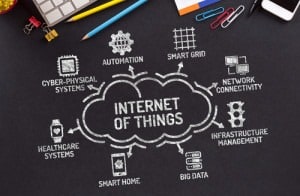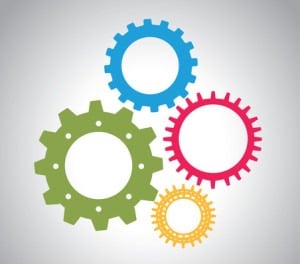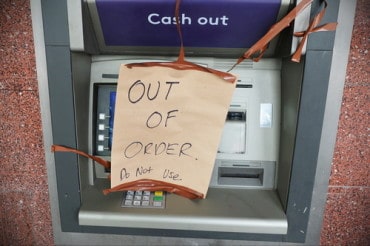
Blockchain goes way beyond financial transactions.
Blockchain technology – that highly disruptive online general ledger or database – is poised to recast the Internet of Things, opening it up to networks and partnerships to accelerate its value.
That’s one of the key takeaways from a recent report published by EY, which suggests that blockchain “may have the most impactful potential of the entire portfolio of disruptive technologies that are now emerging.” That’s because blockchain is likely to impact many aspects of business operations and strategies – such as business models, processes, supply chains and customer relationships. The Internet of Things, in particular, is an initiative will see a re-arrangement due to blockchain.
The report’s authors share the definition of blockchain, noting its ability to digitally deliver “peer-to-peer value exchange.” Security and verifiability is inherently protected through its “globally distributed computations and heavy duty encryption — that ensure the integrity of the data traded among billions of devices without going through a trusted third party,” EY observes.
“Trust is hard-coded into the platform. … [Blockchain] acts as a ledger of accounts, a database, a notary, a sentry and clearing house, all by consensus.” If it takes off in a big way, blockchain would dramatically speed transactions, while eliminating the middlemen required to assure trust.
This has significant implications for IoT, the study’s authors observe. “The IoT and blockchain technologies were kind of made for each other,” according to Paul Brody, EY Americas strategy leader. Blockchain could “become the underlying infrastructure for many IoT networks,” in which millions or billions of devices participating in multi-corporate networks need to be tracked, verified and coordinated.
This may be first seen in what EY refers to as “industrial mash-ups.” In this instance, blockchains could make it easy for businesses to form partnerships – the key essence of IoT, which will require the swapping of information from a source maintained by one entity to a more centralized system managed by another.
“Industrial mash-ups are fluid partnerships that replace the physical vertical integration of an M&A with the virtual integration of an ecosystem of collaborating partners to bring the new business idea to market,” explains Jeff Liu, EY global technology sector leader. An area that may benefit from this kind of capability is the so-called sharing economy, in which goods and services are exchanged through digital brokers, usually without money being involved.
Blockchain IoT: An AirBnB for machinery?
As an example, “idle time of high-value industrial assets can be worth up to millions of dollars per day or per hour — and the fact is industrial assets are often quite underutilized.
“Blockchain-powered industrial IoT networks will allow us to connect industrial assets — everything from shipping containers to MRI machines to construction equipment — into real-time digital marketplaces where we can make better use of them,” says Brody. “Blockchains would become the interaction engines for these marketplaces, supporting financing, rental, insurance — all kinds of services.”
The maintenance or upgrade requirements associated with devices – or the products they are contained within – may be monitored over blockchain networks. In the process, questions over who owns a device, who owns the data, and who is responsible for upkeep may be resolved and embedded into the network – with no need for wrangling with separate contracts. With millions of devices at stake, the shift in speed to market will be noticeable.





























